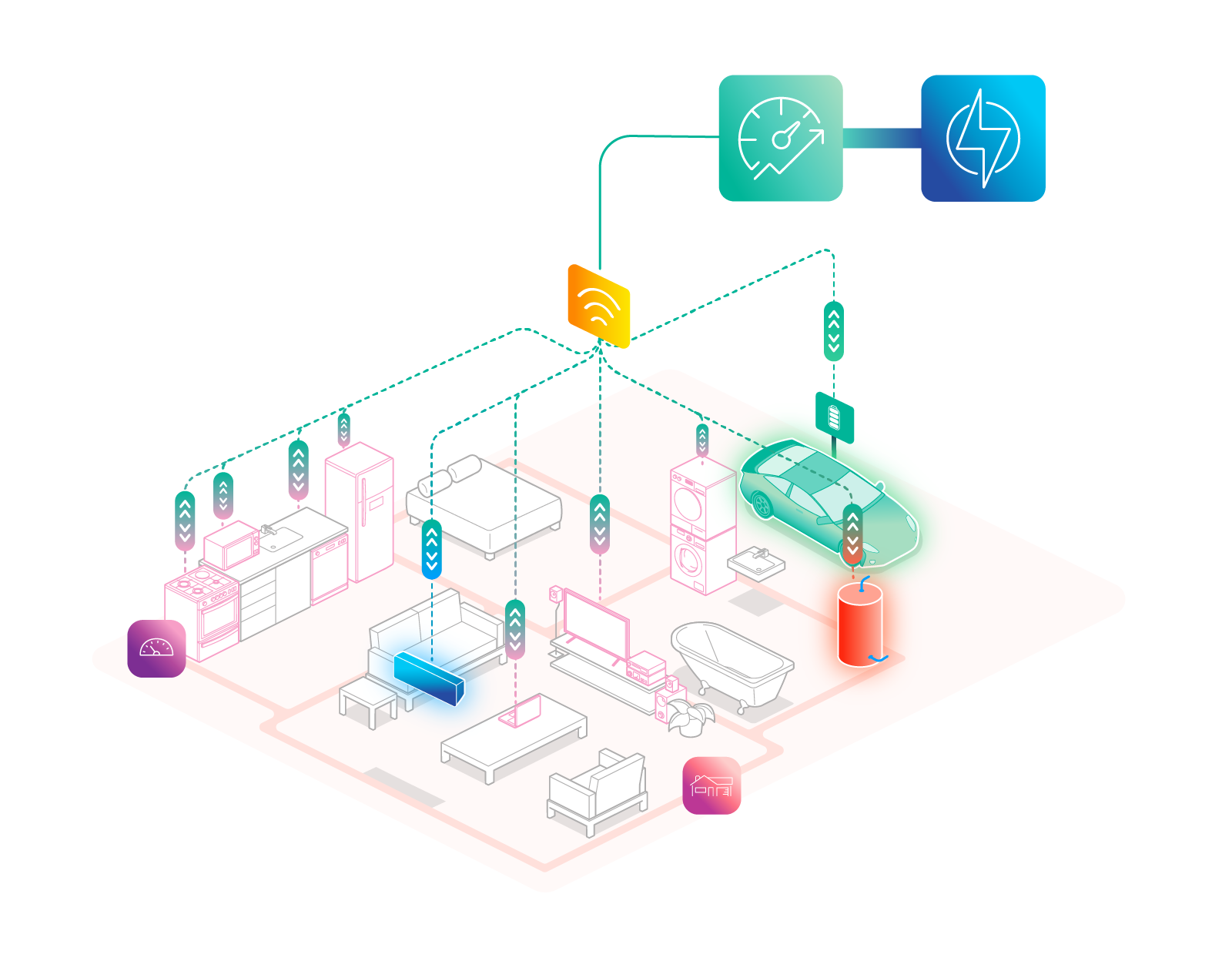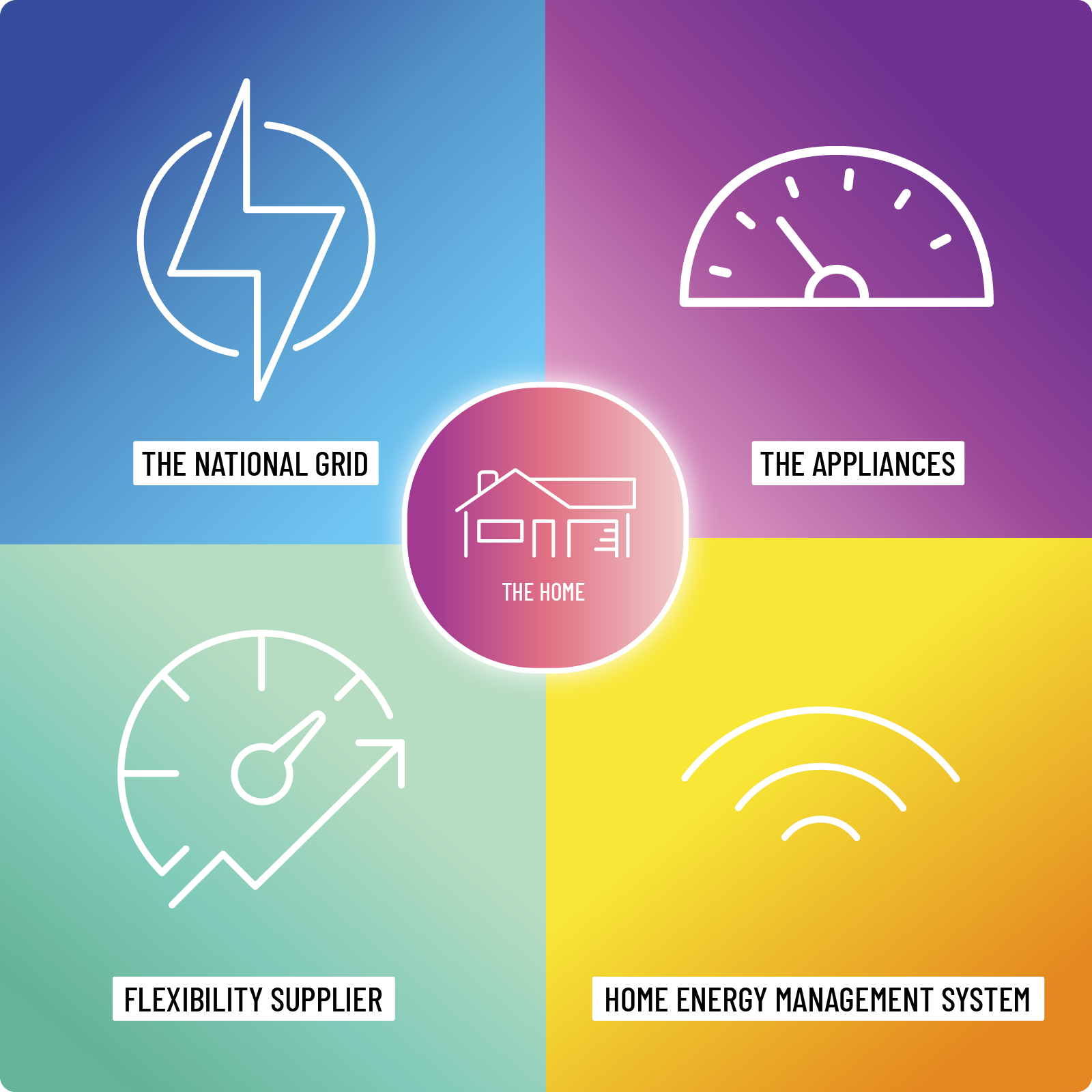What is a smart home
A smart home isn’t the house itself, but a clever system that links residential appliances together into a network and enable communication with the national electricity grid. The smart home system operates the appliances within the house to use electricity as efficiently as possible, without changing the way you use your technology. A fully functional smart home is not yet available, but there are steps you can take now.

In a smart home, electrical appliances are expected to connect to a ‘flexibility supplier’ that help manage your supply of electricity based on the needs of your household. For this to work, your appliances would either have ‘smart’ technology built into them, or be plugged in to a ‘smart’ plug.
This approach to home electricity use could reduce costs for households, take pressure off the national electricity grid, and help reduce New Zealand’s carbon footprint.
Elements of a smart home

The home – Any home can be smart, regardless of whether you rent or own. The set-up largely focuses on technology, rather than the building.
Appliances – Smart appliances are set up to run in the most efficient way possible, and reduce unnecessary power use, especially at ‘peak’ times. Examples of appliances that can have smart capability include washing machines and dryers, heat pumps, hot water cylinders, electric vehicle chargers, solar PV systems, home battery units, and lighting systems.
Home Energy Management System (HEMS) – Sometimes a smart home is controlled by a ‘hub’ that enables centralised control of the network of smart appliances in your home. This is set up by an electrician – and can be added to a household at any time.
Flexibility supplier – A service provider that manages the flexibility of electrical energy consumption or generation on behalf of a customer. The service is not yet available in New Zealand.
National Grid – The grid is the nationwide system of electric power transmission in New Zealand. Your energy provider is the company that supplies energy from the grid to your home.
Benefits
For New Zealanders
Set and forget – Appliances will have the capability to ‘learn’ when you use them and to save energy when you don’t. When your appliances are all set up to run with smart capabilities – you can set and forget them.
Do your bit – You can reduce your household costs and environmental impact at the same time.
Save money – Bills can be significantly lowered by running your appliances more efficiently and shifting your energy use to periods of least cost electricity.
Extending the life of appliances – Appliances and other electrical devices always last longer if they are used more efficiently and less often.
For the planet
Renewable energy first – When lots of people use electricity in their homes at the same time (peak demand), electricity becomes more expensive and can require generation from fossil fuels. Shifting demand to off-peak periods prioritises the use of renewable energy sources.
Minimises electricity generation – Smart technology avoids wasting electricity and minimises unnecessary energy generation.
Reduced infrastructure costs – Managing demand on the electricity grid reduces the need for expensive new electricity generation infrastructure.
Electrifying New Zealand – Better managing electricity demand helps enable a move away from fossil fuels towards electrification, such as the increased use of electric vehicles.
Smart home vs smart device
Smart home systems
- Device or system communicates with a flexibility supplier
- Can use a home energy management system or hub
- Optimises energy use in the home
- Reduces demand at peak times
Devices that aren’t that ‘Smart’
- Controlled remotely via app or phone
- Don’t communicate with a flexibility supplier
- Only work with specific apps for that product
- Don’t reduce demand at peak times
How much you can save
Your exact savings depend on a few things:
- How many smart devices you have in your home, whether they are ‘plug and play’ devices that have inbuilt smart capabilities, or if they are retrofitted using a smart plug or smart thermostat.
- How much power the devices use in different power modes.
- Whether you have a home energy management system.
- How competitive your flexibility supplier is, and the demand constraints that are unique to where you live.
- Your behaviour – you can always choose to override your smart home system, which gives you the freedom to always use your appliances the way you want. However, overriding automation also impacts the ability of a smart home to optimise your energy use, and therefore reduce household costs.
Why you should care
Energy use in New Zealand is changing for the better. We’re shifting away from fossil fuels in favour of renewable energy, which will reduce our carbon emissions and impact on the climate.
As a result, we’re becoming more dependent on electricity. We’re seeing growing uptake of electric vehicles , and many of our industries are decarbonising their processes with electric alternatives.
It's estimated that only around 40% of our household power bills are based on how much electricity you use. The remaining 60% is associated with ‘delivering’ electricity to the home, a cost that will increase for all kiwi homes with large grid infrastructure. These costs can be minimised by limiting pressure on the grid. To do this, we all need to change the way we use energy in our homes.
